
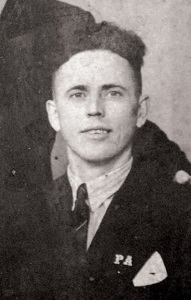
Full name: TALDA Vladimir
Date and place of birth: 1919
Date and place of death: 3/09/1944 - Rebecq
Cause of death: Killed in action during the liberation struggles
Buried to; Grave: Rebecq communal cemetery; grave: North side
Date and place of capture: East front, Stalingrad
Date of entry into Belgium: ?
Place of detention: Coal mine of La Louvière
Date of evasion: Avirl-Mai 1944
Resistance network: Partisans Armés, Corps 023
Soviet subjects were seen in Rebecq in 1944. They arrived by several groups, helped by Belgian Resistance members of the Armed Partisans. In all, there will be about fifteen of them who were dispached in different caches, in general, farms, whose owners work for the Resistance and where it is easier to hide in case of inspection of the Germans.
If we know nothing of most of them, we have precise indications concerning at least seven of these men, thanks to the testimonies of Maryse Caliman, nee Kestemont, daughter of André Kestemont, chief of the P.A. group for the Rebecq region, Jeannette Nadle, nee Bergman, who had been hidden at Jeanne Rowart’s house because she was Jewish. These two people, now in their eighties, were teenagers in 1944. (Jeanne Rowart was an active Resistance member)
Another source of information comes from the registers of foreigners in the municipality of Rebecq, where six individuals of «Russian» origin are registered, the day after the liberation, in October 1944. (The soviet citizens were called “Russians” by the population of Rebecq in this time)

On the left, Maryse Kestemont and Jeannette Nadle, the two direct witnesses of Russian history in Rebecq. They were teenagers in 1944. On the right, a recent photo of Lyudmila Stepanovna, and on the left, her daughter and grandson, (Photo: Droztik Magazin)
Finally, the report of Second Lieutenant aviator Alfred Sanders whose plane crashed at Henripont (commune of Braine-le-Comte) and which was recovered by the local resistance. He was taken to a cache in Hoves (commune of Silly) to be redirected to the farm Tondeur in Wisbecq, following a descent of the Gestapo. In Hoves, he met 17 men, all from the Soviet army who had been captured by the Germans on the Eastern Front and taken as prisoners to Belgium to work in the coal mines.
Our aim is not to rewrite the history of policies in both the East and the West, during this period of conflict, or even afterwards, during the “Cold War”. But we begin, three-quarters of centuries later, to understand what the commitment of these men from the immense USSR was, who after experiencing the capture and detention by the Nazis, were sent to the coal mines of Belgium and the North of France, to finally escape from them and put themselves at the service of the Belgian Resistance.
Stepan Afanasyevich Dorogov was born in 1913 in Seraphimovka, a small town in Kazakhstan, in the district of Akmola. The family was well off because they had a windmill. He had a brother named Sergey and a sister named Natalia. In 1941, the two brothers, as well as Natalia’s husband, joined the Soviet army and left for the front. Only Stefan returned home. Like most families in the Soviet Union, Stefan’s family will not see many of its members return.
It was during the fighting in Stalingrad that Stepan was seriously injured. Unconscious, he was taken to a prison camp because he was taken by the Germans. From this camp, somewhere in Ukraine, all prisoners are transferred to Germany, somewhere near the western borders of the Reich.
According to the testimony of Stepan’s daughter, Lyudmila Stepanovna, her father escaped from an internment camp in France and travelled for miles with about ten other prisoners to arrive in Belgium. It seems that the memory of Lyudmila, as to what his father told him, at least 40 years ago, got somewhat mixed up. On the other hand, she cites two essential documents that make it possible to affirm that reality is in the testimony of Maryse Caliman, née Kestemont. She is the daughter of the head of the Armed Partisans Group (P.A.), which took over, in early 1944, some fifteen fugitives of Soviet origin who were placed in the coal mines of the Central Region.
Lyudmila holds two attestations relating to the engagement of Stepan Dorogov in the group Partisans Amés. The first one most probably comes from a Belgian person responsible for the armed struggle or a hennuyère mine which says in substance: «The undersigned certifies that the Russian prisoner of war Stepan Dorogov worked in our mines during the German occupation of March 20
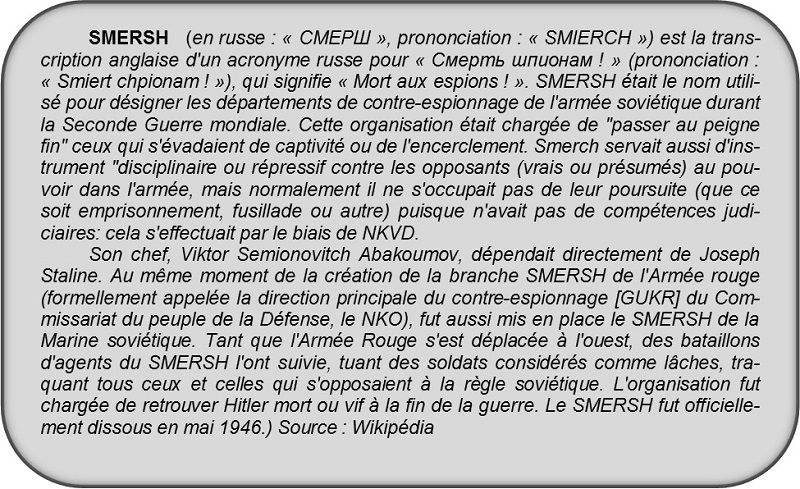
The other attestation is more precise and emanates from the body of the Armed Partisans: I, the commander of the first battalion of the 023rd Partisan Army Corps of Belgium, testify that the Russian partisan Dorogov Stefan was under my command from April 25 to October 20, 1944. He served courageously and participated in the following operations. Signed: Commander of the First Battalion 023 of the Ignash Corps (Ignace).”
Both documents are signed, but we are not aware of the names of the signatories.
Lyudmila Dorogova also holds several documents such as the identity card that the municipality of Rebecq had issued to her father after the release, at the same time that she had granted it to 5 other of her fellow wrestlers. The journey of Stepan Dorogov and his compatriots within the P.A. organization is described by the various testimonies in our possession. It thus seems possible to describe the extraordinary adventure of the Soviet fighters who put themselves in the service of the Belgian Resistance in order to fight the common enemy: the Nazis.
For the sake of the text, we will use the term “Russians” to name the Red Army soldiers brought to Belgium and who fought alongside the local resistance movements. There were, within these groups of escapees, of course, Russians, but also Belarusians, Kazakhs, Ukrainians, etc.
Most of the men from the Soviet Union who fought with the Belgian resistance in the Rebecq region come from the coal mines of Hainaut, where they had been taken by the Germans after being taken prisoner on the Eastern Front, and in particular during the Battle of Stalingrad. Their conditions of detention proved inhumane, as the Germans were so hard on their prisoners. The poor were dispossessed of everything they had on them and placed in camps in which they were crowded, undernourished, mistreated and often beaten by their guardians. But the need for labour in the coal mines in the occupied countries led the Germans to transfer their prisoners to the mining regions of Belgium and northern France. If it has been said that the Russians who joined the Belgian Resistance were soldiers of the Wehrmacht, it is more accurate to say that those known within the resistance movements in Rebecq were indeed prisoners of war of the Germans
Maryse Kestemont tells us her memories of the Russians she remembers very well, after having formally recognized them in the photos we submitted to her.
Stepan Dorogov and his comrades in arms reported to Rebecq were taken over by André Kestemont, the head of the P.A. network for the region of Rebecq-Braine-le-Comte-Tubize. One evening in April 1944, Kestemont goes to La Louvière, take charge of the dynamite. He is accompanied by Emile Boucher, aka “Commandant Claude”, a well-known figure of the Resistance, in the region. It was dark, when after taking delivery of the explosive, the two men were surrounded by about fifteen men who begged them to take them with them, they have just escaped from their place of work and are likely to be sought by the Germans quickly. The two Resistance fighters put them in the back of the van and join Rebecq, where the escapees are placed in various safe places for the night. The next day, the Resistance Rebekahs organized themselves by dividing the Russians into groups of about four men spread out in several farms and houses of the Resistance. These groups are mobile and readily transferable when needed. Another group of about twenty Russians are also reported to Hoves, current commune of Silly. Like those of Rebecq, they are scattered in several places acquired to the Resistance. During a descent from the Gestapo to Hoves, the Russians join those of Rebecq and hide in the various farmhouses-refuges. Throughout 1944, they were regularly transferred from one place to another, as the Germans regularly received clues about the Russian fighters and those who housed them. At the Tondeur farm, during a descent of the Gestapo, the Russian fighters are protected in a cache arranged in the floor of the attic of the farm. The occupants did not find them, but arrested Farmer Shearer for questioning. That is how these men find themselves in the Tondeur farms and the castle, in Wisbecq, at Jeanne Rowart’s farm and at the Ernault farm, at the top of the Montgras, at the Marsille farm, at the top of the Stoquois, at Hoves, and in many other places. There were no Russians staying with André Kestemont because the situation in the village was too dangerous and a raid on his house on Rue de la Cure could have led to arrests in other houses on the street.»
These men were combatants who had already demonstrated their bravery and many of them had already attempted to escape from their detention in Germany. This is how we live in several places in Belgium, bands of these men who sought, as soon as they had fled from the mines where they were carrying out forced labour to come into contact with natives fighting the occupier.
In Hoves (commune of Silly), there were about twenty Russian fighters who were constantly cracking down and we have the proof by the report that USAAF aviator Lieutenant Alfred Sanders makes to his authority, when he returned to the United States. Here is the copy of the text that we have already published previously and where the indications come from:
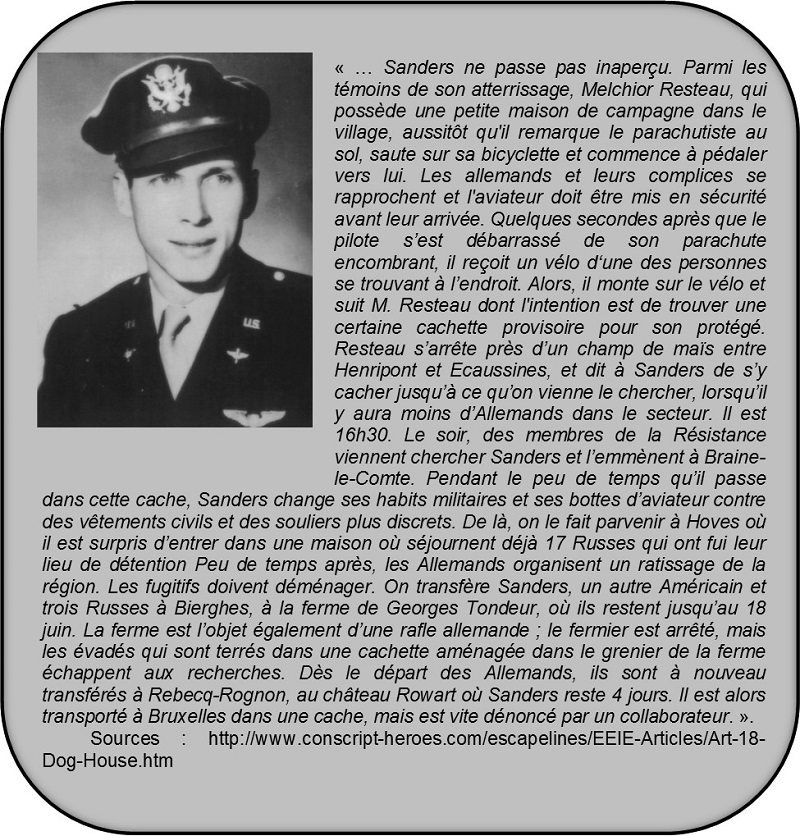
The testimony of Maryse Kestemont, that of American Lieutenant-Aviator Alfred Sanders and that of Jeannette Nadle who was a refugee at the Resistant Jeanne Rowart corroborate the statements of the daughter of Stefan Dorogov who says that his father and his Russian comrades in arms have involved in the transportation of weapons and explosives for resistance operations in the region, more “tough” actions vis-à-vis occupants and employees as well as sabotage. In 1944, the railway line that crosses the municipalities of Tubize, Quenast, Rebecq and Braine-le-Comte (line SNCB 115) was strategic for the Germans who used it to transport weapons and military equipment to the western front. Surveillance of the area by experienced Wehrmacht troops presented an additional danger of being arrested. Thus there were several disposals of German soldiers in the area, carried out in particular by the Russian Partisans.

André Kestemont, his wife strongly involved with the Resistance and Emile Boucher, alias Commandant Claude, great resistance fighter of Tubize
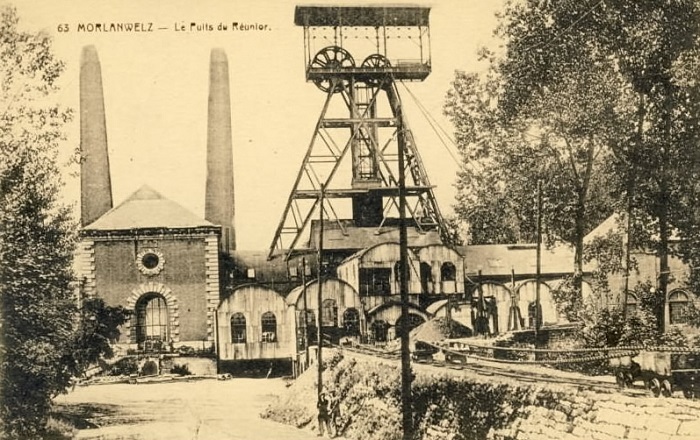
A colliery in the La Louvière region
Maryse Kestemont also said that some groups were responsible for “neutralizing” notorious whistleblowers. These were identified by the postal agents who systematically received letters addressed to the Kommandantur.
When they denounced citizens, the Resistance, helped by the postal carriers, tried to find their authors and once the author was known, men were sent to settle the score of the traitors. If the method was expeditious, it proved necessary, because the arrest of those who were denounced could lead to the arrest of many other Resistance Fighters.
There were also the actions carried out on the railway line and the regular sabotage of the line greatly irritated the occupants, especially from June, and the announcement of the Allied advance.
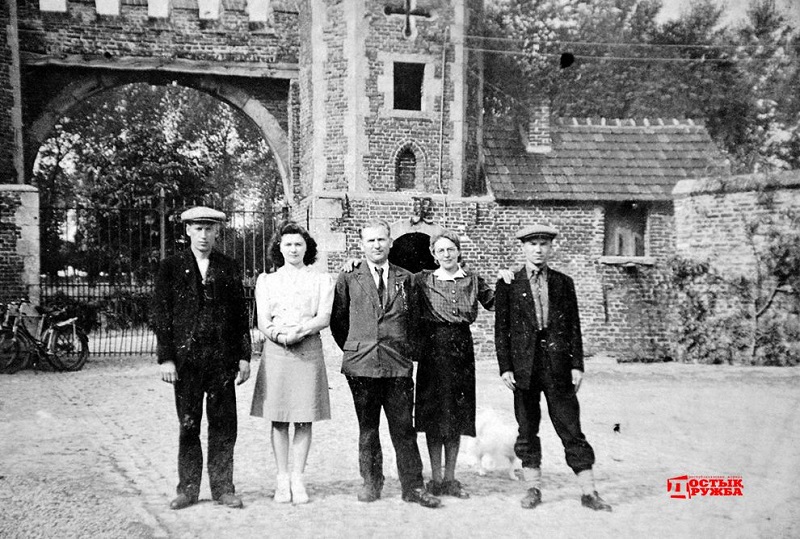
Photo showing from left to right Stepan Dorogov, the daughter of the farmer Shearer, Vasil Denisevitch, the wife of the farmer, born Horlait and Vladimiir Talda. The back of the photo clearly shows that the photo was taken in the courtyard of the farm; one can see the typical porch of the farm which is located on rue d'Overschies, in Wisbecq (Photo: Droztyk Magazin
On September 2, the day before the liberation of Brussels by the Allies and the day before that of Rebecq by elements of the Irish Guards, our Russian Partisans actively participated in the fighting that took place in the Montgras, against the German army trying to escape. The "Krauts" were about 150 men and several tanks. There was a battle and there were deaths. Civilians include Fernand Baguet, Hubert Quivit, René Quick and Marcel Vanherweghen. The Resistance at the scene of the battle were only fifteen and the clash against the opponent ten times more was very harsh. Lyudmila says that his father Stepan and his companions present at the Battle of the Montgras had taken refuge in a barn to which the Germans set fire. Thanks to the wit of one of the Partisans, they were able to take refuge in a pit that was there and thus escape a certain death, because the fire destroyed the building. We did not find any evidence that could confirm or disprove that statement.
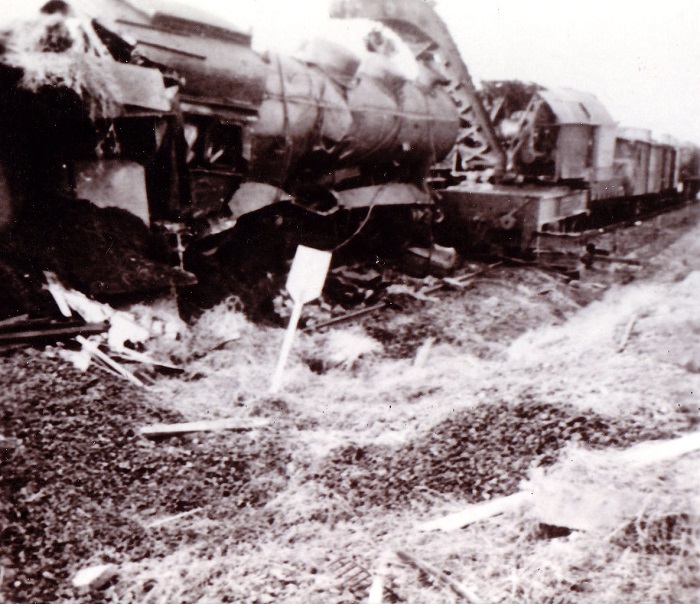
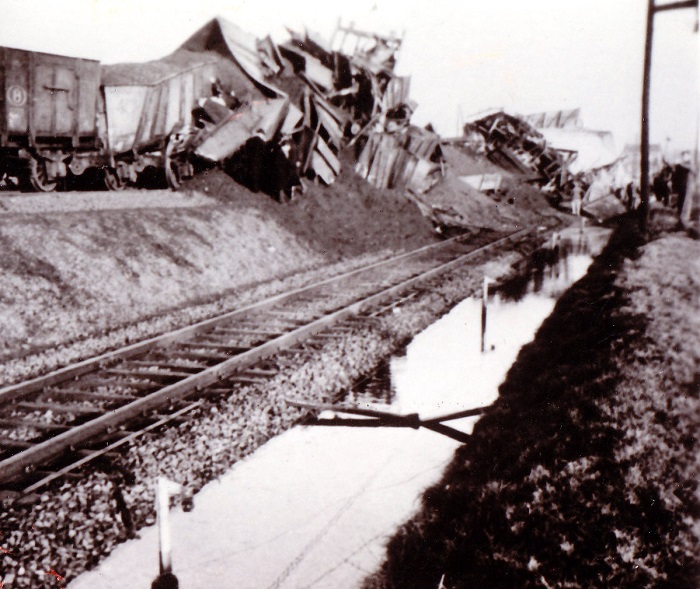
Photos of sabotage of the SNCB 115 railway, due to the action of the Resistance of the network of Armed Partisans, among others of the Russians of Rebecq (Archives: Rewisbique)
As for the enemy, ten soldiers were killed in the fighting. Their bodies were taken to the hospice, as were the soldiers of the Wehrmacht who were wounded in the fighting of that day. The dead were named Karl Michel, Kartus Karl, Eckart F., Schafen F., Reteiner Hendrik, Ravell, 2 unknown, Klinheid Hendrik and Müller. We have these names of most of these Germans thanks to the notebook that the local gravedigger of the time kept up to date. He recorded in it the names of all the people he buried; if names are missing or misspelled, it is probably because our gravedigger had not received the precise indications of his hierarchy, the situation of the moment being more than chaotic.

Photos taken after the Battle of the Montgras, on which we see villagers and a British Ally on German tanks destroyed by the Resistance, September 3, 1944 (Rewisbique Archives)
So it was on September 4 that all the men killed in the fighting for the liberation of Rebecq were buried. The Resistance, including Vladimir Talda, had a funeral in the presence of a large crowd. All those who had resisted and were in Rebecq that day participated in the tribute.
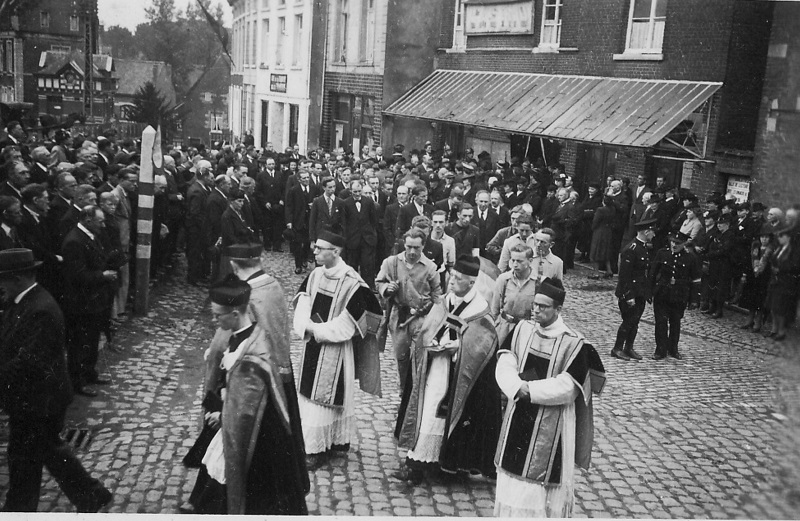
Photo showing the funeral of the resistance fighters killed in the fighting in Rebecq on 3 September 1944. Vladimir Talda was one of the victims buried that day (Rewisbique Archive)
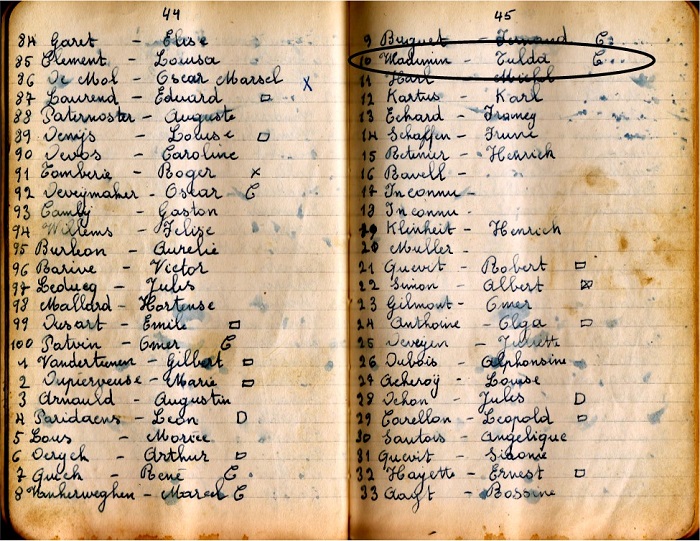
Page 45 of the diary of the gravedigger of Rebecq, where are noted all the dead buried on September 4, 1944 in the communal cemetery of Rebecq

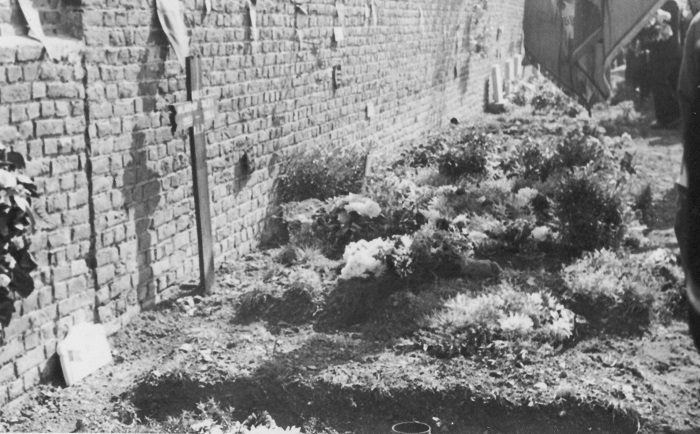
Above, the burial of Vladimir Talda and the honors rendered by the authorities of Rebecq (Rewisbique Archives)
Several Russians were registered in the population register of Rebecq. Among them is Stepan Dorogov. They were domiciled on Rue de la Cure, at the home of André Kestemont, their leader. According to the daughter of André Kestemont, they had wished to visit the city of Paris before returning to the Soviet Union. They stayed a few months before their return.
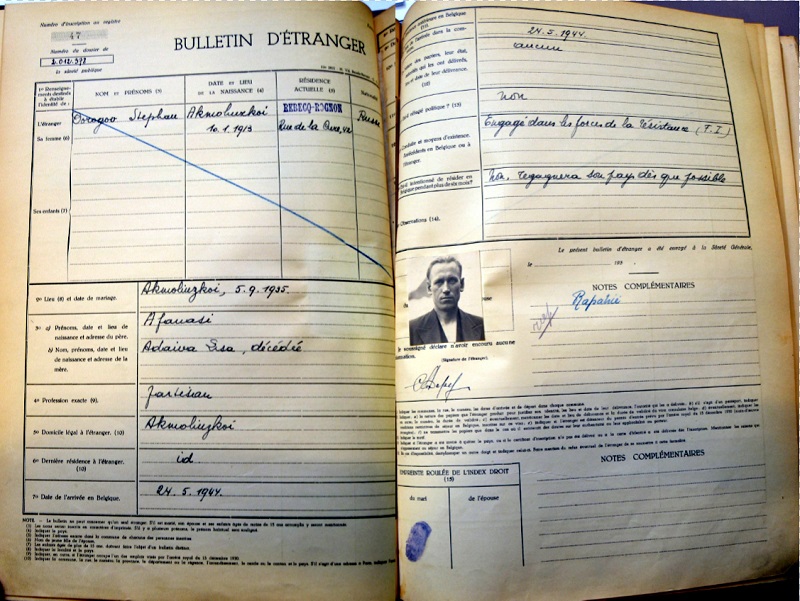
Stefan Dorogov’s registration page in the municipality of Rebecq, September 1944.. The Foreign Registration Officer did not specify the date of entry into the commune as a registrant, but notes that the Russians arrived at Rebecq on 20 May 1944, which seems to be wrong, because the collected testimonies prove that the Russian Resistance were to be in the region long before the month of May. Lyudmila Dorogovna cites the date of April 25, 1944, which seems more plausible. (Rewisbique Archives)

On the left is Vasil Denisevoch, a Belarusian doctor, Stepan Dorogov and Valdimir Talda, the only one from the Rebecq group who will be killed. On the right, photo taken in Brussels, a few days after the Liberation. One sees, from right to left, Jeannette Bergman who was hidden at Jeanne Rowart’s house because Jewish, Piotr Jeffemov, Russian Rebecq Supporter, Jeannette’s parents. (Arch. Rewisbique)
It is not known what happened to all these men except Stefan. Upon his arrival in the USSR, he was sent to a concentration camp in Solovki. Following the numerous representations made by the leaders of Armed Partisans and the Belgian authorities to the Soviet authorities,
Stefan Dorogov is extracted from the camp of Solovki, in the North of the USSR and is sent to fight in the Far East to fight against the Japanese.
It was not until 1947 that he returned to his home in Seraphimovka, Kazakhstan. He learns that his wife left with another man, abandoning her two children. Some time later, he met Lydia Fedorovna Schulz, whose ancestors had arrived in Russia during the time of the Tsarina Catherine II. They get married and together, try to build their lives and the lives of their children as best they can. He lived until 1971 when he died at the age of 54.
When Stefan Afanasyevich Dorogov told his children about his journey to Belgium, he spoke enthusiastically about street lighting, gas stoves, vehicles used to clean the streets, In short, things that had never been seen in his home region. He would have liked to have a Belgian visa and go back to see his Belgian friends with whom he had fought for Freedom!
For years, André Kestemont has made numerous representations to the Soviet Embassy and the Belgo-Soviet Friendship Association. We were in the middle of the Cold War and all those who frequented the circles connected with the USSR were supervised by the State Security. This was the case of André Kestemont who, despite this, tried, without succeeding, to reconnect with his Russian friends

In the photo taken in May 1944 and published in the newspaper «The Illustrated Patriot», after the war, one easily recognizes in the foreground on the left Mikhail Chichkin and Jakov Nikiforov and on the right Stepan Dorogov

In 1994, 50 years after the fact, Lieutenant Alfred Sanders returned to Rebecq. Since his return to the USA in 1944-1945, he became a colonel in the USAAF. He is of course retired when he arrives to celebrate the 50th anniversary of his epic and, through it, that of all the Dark Fighters whom he met, during his escape, after his plane crashed in Henripont. We see him during his stay with his wife. He had insisted on reviewing the places where he had passed, among others, the Tondeur farm, where he was able to find the cache in which, with the Russian Partisans mentioned in this account, he was able to hide during a Gestapo raid, at the farm.
Since then, despite the fact that most of the witnesses at the time have disappeared, we have been fortunate to find new elements that have allowed us to write this extraordinary story, among others, that of these men who came in spite of themselves from distant Russia but did not hesitate to put themselves at the service of the defenders of Freedom/p>
It is to their memory that this opus was written, so that we do not forget!
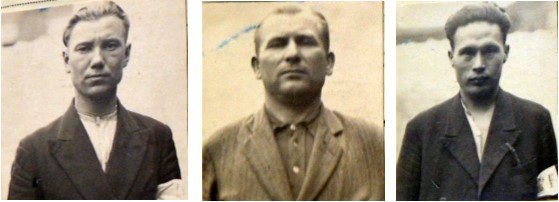
Chichkine Mikhaïl (Michel), Nikiforov Jakov (Jacques), Karalkine Youri (Georges)

Jeffemov Piotr (Pierre), Dorogov Stefan(Stéphane), Denisevitch Vasil (Basile

Talda Vladimir
Chichkine Mikhaïl born 25/05/1916 in Pitchura, married 15/10/1933 in Pitchura
Residence in Rebecq: rue de la Cure, 42 - Arrived in Belgium 24/05/1944
Parents: father: Matwi (deceased) - mother: Fediwa Oustia, deceased.
Nikiforov Jakov, born 21/09/1906 in Czremen, married 25/10/1934 in Czremen
Residence in Rebecq: rue de la Cure, 42 - Arrived in Belgium 24/05/1944
Parents: Father: Nikola (deceased) - Mother: Aksonova Aksinia (Tafda, Main Street, 70)
Karalkine Youri born 3/04/1910 in Eltock, single, domiciled in Vladivostok
Residence in Rebecq: rue de la Cure, 42 - Arrived in Belgium on 24/05/1944
Parents: Father: Yvan (deceased) - Mother: Natchinova Olga (deceased)
Jeffemov Piotr born 2/12/1908 in Stalingrad, married 15/11/1934 in Stalingrad; tractor driver s
Residence in Rebecq: causeway of Saintes, 74 - Arrived in Belgium in October 1942
Parents: Father: Moïcejevitch (deceased) - Mother: Keretchenkova
Dorogov Stefan born 10/01/1913 in Akmoliurzksi, married 5/09/1935 in Akmoliurzksi
Residence in Rebecq: rue de la Cure, 42 - Arrived in Belgium 24/05/1944
Parents: father: Afanasi - mother: Adaiwa (deceased)
Denisevitch Vasil born on? at?
Bielorusse, Doctor - Arrived in Belgium on 24/05/1944
Talda Vladimir born in 1925
Killed in Action on 3/09/1944 - Arrived in Belgium on 24/05/1944
Buried in the Rebecq Communal Cemetery


